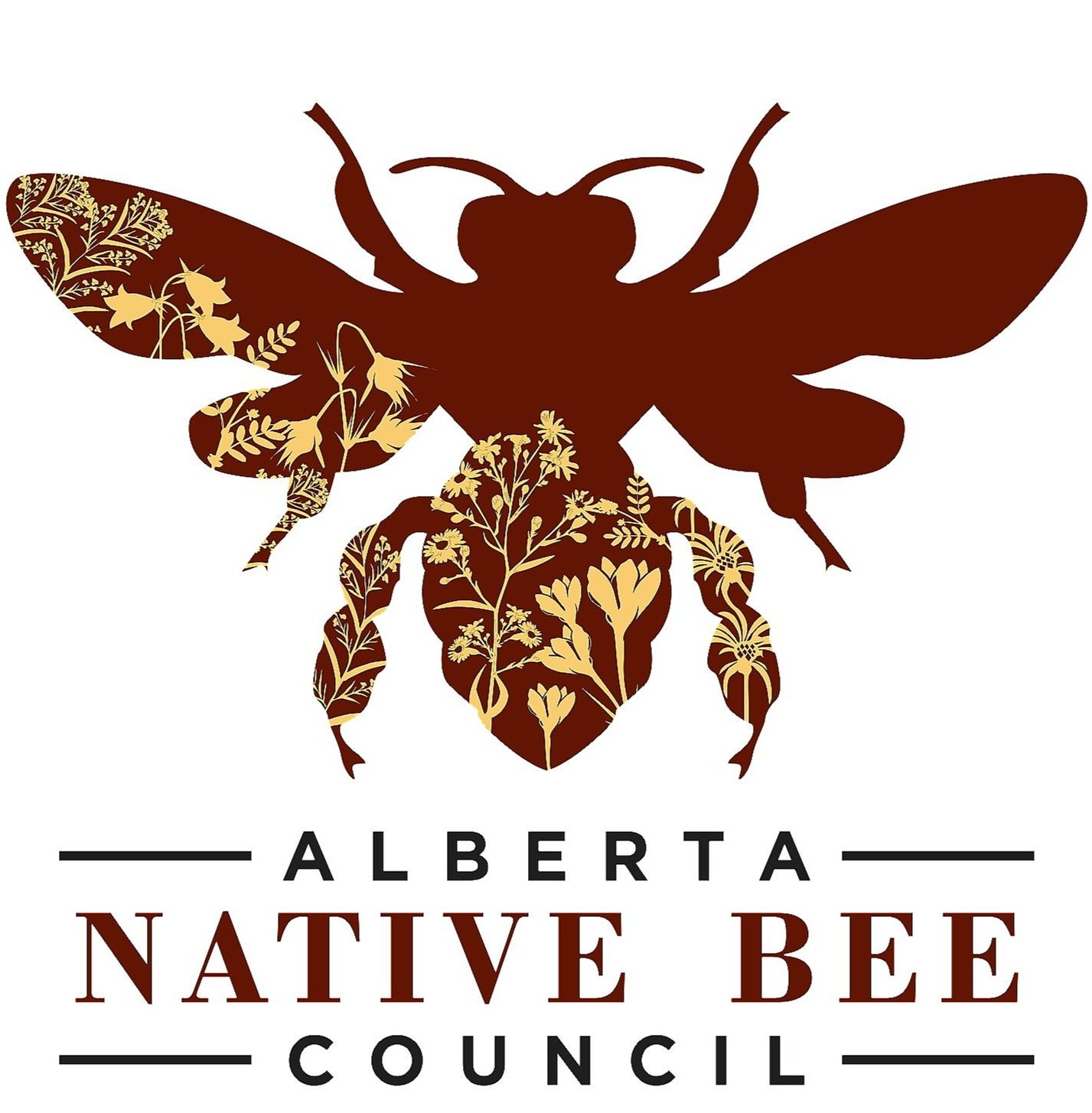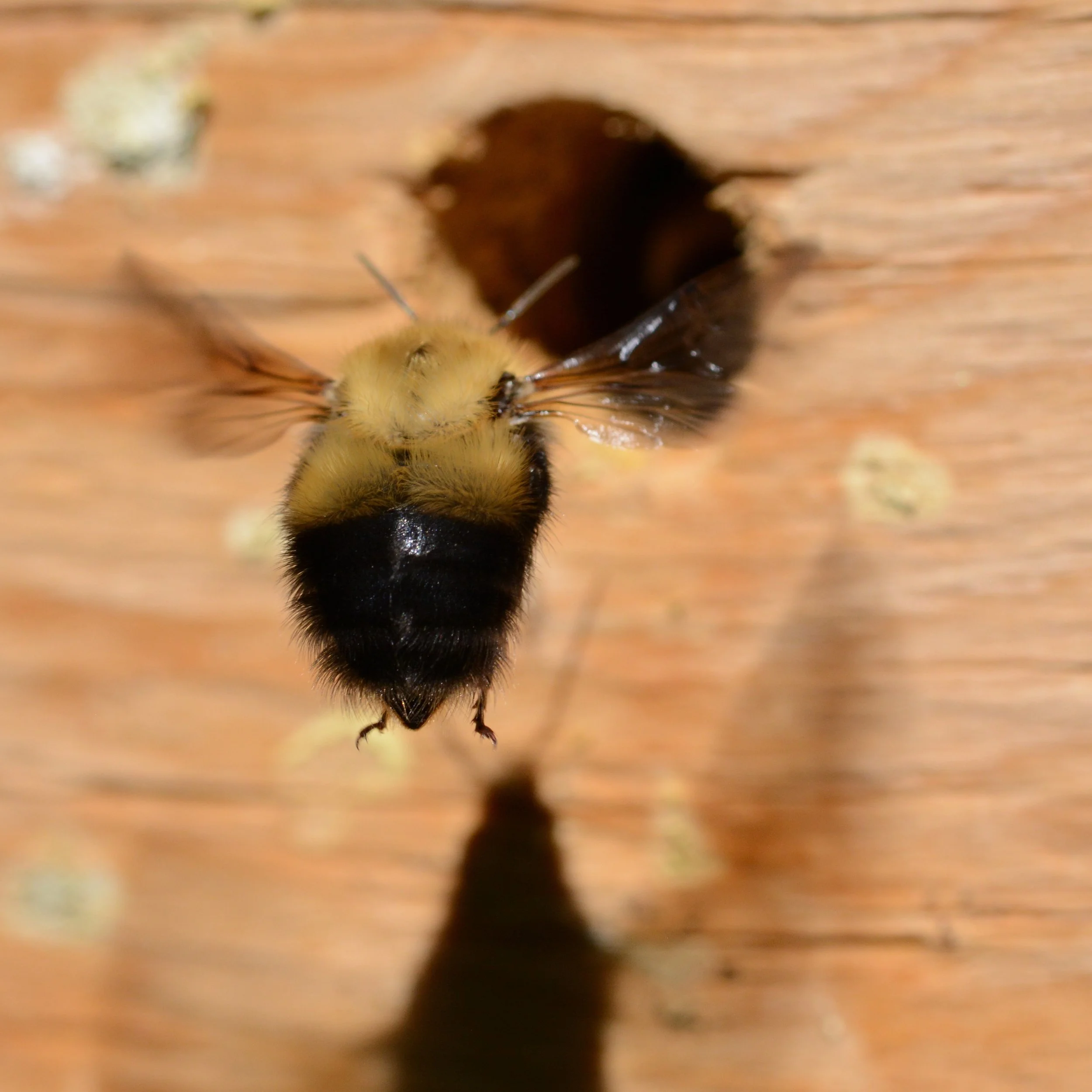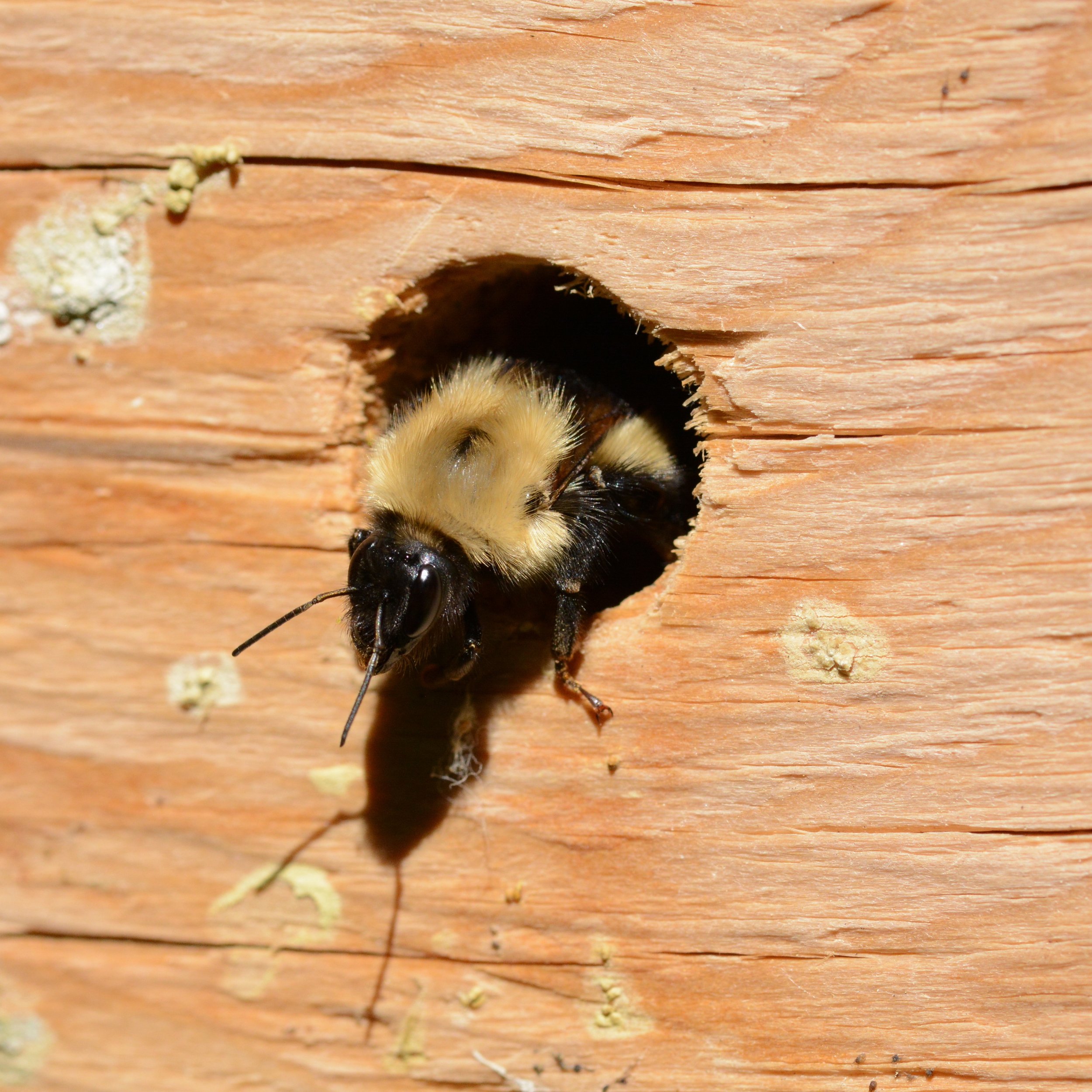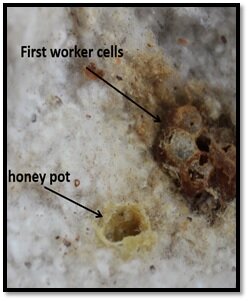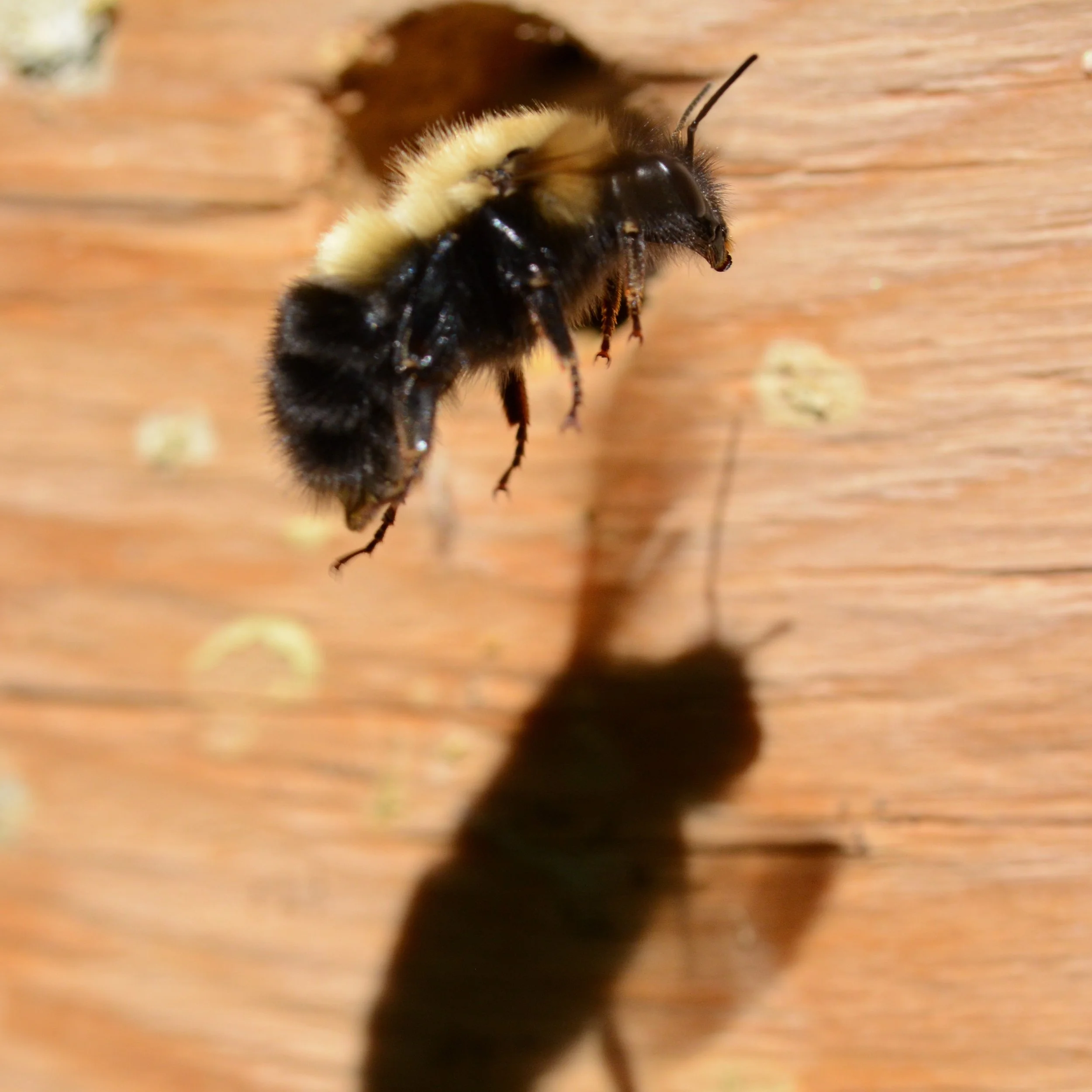
Bumble Bee Box Monitoring Program
In 2017 the Alberta Native Bee Council launched a citizen science bumble bee box monitoring program. Similar to bird houses, bumble bees may or may not colonize a bumble bee nest box. In the literature, bumble bee colonization rates vary widely, but in Alberta we regularly find that about 25% of our bee boxes are colonized with higher rates in urban areas than in rural areas.
How to Participate
If you would like to participate in our bumble bee box program you can build your own bumble bee box by following the instructions provided in the link below.
Once you have a bumble bee box, place it in your yard, on your balcony or anywhere outside where a bumble bee queen might find it. Bee boxes can be placed on the ground, above the ground affixed to a tree or fence post or even buried underground connected to the surface with a tube. They prefer deciduous (poplar) trees over conifers.
Bumble bee boxes should be protected from direct afternoon sun, rain, and wind. Placement in South facing, or east facing locations are ideal as this orientation provides morning sun to warm the colony. A piece of thick plastic can be stapled to hang over the box protecting it from rain. Ensure that the front of the box is not aligned so that the bees will fly perpendicular to prevailing winds when entering and leaving the box.
Bumble Bee Box - Timing
When to place them out? (April/May)
Bumble bee boxes should be placed outside as soon as the snow has melted and the first flowers (e.g., crocuses, tulips, etc.) are emerging. In Alberta, you will want to ensure your bumble bee box is outside by May long weekend. Make sure you have clean cotton stuffing to place in your bee box in spring. Bumble bees like to have something to bed down in and researchers have determined that raw cotton works well. Other natural materials may be used but ensure that bedding material will not tangle little bee tarsi (legs) or cause condensation in the box.
The image above shows a spent B. mixtus colony.
When to check them? (July)
If no bumble bees have inhabited your bumble bee box by the first of July (Canada Day long weekend), then the box will not be colonized by bumble bees this year. You can bring your bee box inside for storage or leave it outside to allow it to weather. You can report back now on the lack of bee activity by visiting the ‘Bumble Bee Box Reporting Form’ Tab on our website. It is important to report back even if no bees inhabited your bumble bee box.
The image above shows an active colony in early August. The “cells” are the wax balls the larvae feed within and develop into mature adult bees). Cells are put down in layers with the bottom-most cells being the first “brood” (first workers produced by the queen). Each layer of colony cells is placed on top of the next as they emerge. Notice the honey pots along the bottom left of the colony, just enough honey to get through a few days at a time. Workers can also be seen here tending the cells. Success of a colony is contingent upon the production of new queens which will appear as larger cells towards mid-late summer depending on the species.
When to clean them out? (Sept/Oct)
If your bumble bee box was colonized, the colony will start to die-off in September. By mid-October (Thanksgiving weekend), there should be no bees living in your bumble bee box. This is when you should inspect, report back to the Alberta Native Bee Council, and clean your bumble bee box. See the ‘Bumble Bee Box Reporting Form’ button below for details on how to report back. Remember, it is important to report back whether your bumble bee box was colonized or not! Fall is also the best time to clean your bumble bee box. All box contents should be removed. and the interior and exterior (especially the front of the box) should be wiped with a mild bleach solution. The Alberta Native Bee).
